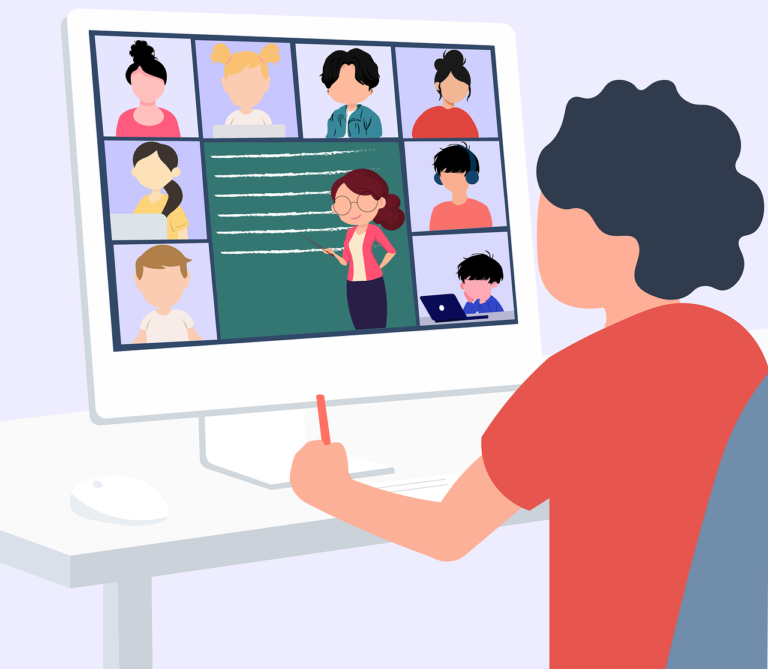Vendita del venerdì nero!
Usa il codice coupon alla cassa per il 40% di sconto!

Come insegnante a distanza, dovete essere pronti a coinvolgere i vostri studenti in modi diversi da quelli tradizionali. Affinché possano imparare in modo efficace, dovete assicurarvi che siano in grado di seguire ciò che dite e di capire dove sta andando la lezione. Questo può essere un problema quando si lavora online con studenti di età, competenze tecniche, stili di apprendimento e background diversi. Ma con le tecniche e i software giusti per creare lezioni video, è possibile mantenere gli studenti concentrati sulla loro istruzione. In questo post esamineremo alcuni suggerimenti per l'insegnamento a distanza per creare lezioni coinvolgenti che aiutino gli studenti a rimanere interessati e impegnati.
Registrare le lezioni con un registratore di schermo e un editor video è un ottimo modo per catturare il materiale presentato agli studenti. L'uso di questo software per creare lezioni video può avere molteplici scopi. Ad esempio:
Le didascalie chiuse sono un modo per aggiungere del testo a un video. È utilizzato da persone sorde o con problemi di udito e da persone che stanno imparando l'inglese o un'altra lingua straniera. È possibile utilizzare un software per creare lezioni video che consentono di aggiungere didascalie chiuse nella classe remota. Le didascalie possono essere aggiunte prima che gli studenti vedano il video e poi attivate o disattivate in modo che gli studenti possano leggere insieme a loro (o dopo la visione, se preferite).
Quando si utilizza un software per creare lezioni video, è possibile riutilizzare i contenuti delle lezioni precedenti. Questo può essere particolarmente utile quando si ripassa il materiale o si preparano gli esami. Quando si intende riutilizzare una registrazione dello schermo, è importante valutare se utilizzare lo stesso file o crearne uno nuovo.
Le pause sono importanti per consentire agli studenti di elaborare le informazioni. Utilizzate uno screen recorder e un editor video per aggiungere delle pause nelle registrazioni, offrendo agli studenti il tempo di riflettere ed elaborare le nuove informazioni. Considerate di aggiungere una pausa dopo l'introduzione di ogni idea o concetto principale e prima di ogni domanda di discussione. Potete anche aggiungere delle pause in punti strategici della lezione in cui volete che l'attenzione degli studenti si concentri sul loro pensiero, ad esempio durante le richieste come "Cosa ne pensi?".
Se volete che gli studenti siano in grado di elaborare ciò che hanno imparato prima di rispondere, prendete in considerazione l'aggiunta di un'altra pausa alla fine di ogni sezione, in modo che possano riflettere su ciò che hanno appena imparato prima di passare alla sezione successiva. Potete anche usare le pause per incoraggiare gli studenti. Per esempio, se uno degli studenti pone una domanda che richiede ulteriori spiegazioni o approfondimenti (o se c'è un problema di qualità dell'audio), provate a inserire un sottile suono "hmmm" in risposta: questo dà loro tempo pur rimanendo interattivo!
Alcuni dei nostri consigli preferiti per l'insegnamento a distanza riguardano l'uso di funzioni di editing video per rendere le lezioni visivamente più interessanti e divertenti. Un modo per farlo è quello di utilizzare le frecce per indicare le parti importanti dello schermo, un ottimo modo per coinvolgere gli studenti in un'aula remota. Ad esempio, è possibile utilizzare le frecce per indicare:
Incoraggiate gli studenti a lavorare insieme su progetti e discussioni. Gli studenti dovranno comunicare tra loro se vogliono partecipare allo stesso corso, quindi è importante fornire loro l'opportunità di farlo in modo efficace. Potete assegnare progetti di gruppo o programmare un momento in cui la classe si separa in gruppi di lavoro per discutere di un argomento trattato in classe. Lasciate agli studenti un po' di tempo dopo la lezione per discutere le loro idee e condividere il feedback sul lavoro degli altri.
È importante tenere gli studenti impegnati in classe. Per farlo, potete aggiungere una sorpresa divertente al programma della lezione. Per esempio, si può usare una domanda a curiosità per incoraggiare gli studenti a riflettere sul materiale e dare loro dei punti per le risposte corrette. Potete anche far lavorare gli studenti a squadre su diversi rompicapo o giochi che li aiutino ad apprendere la materia e incoraggino la collaborazione tra compagni.
Come si può vedere, ci sono molti modi per rendere più coinvolgente una classe remota. È essenziale che gli insegnanti pianifichino in anticipo e pensino a quali tipi di attività funzioneranno meglio per i loro studenti. Con un po' di creatività e i suggerimenti per l'insegnamento a distanza di cui sopra, è facile per gli insegnanti trovare nuovi modi per coinvolgere gli studenti in un ambiente online. Per il meglio del software di registrazione dello schermo, visitate il nostro sito web!